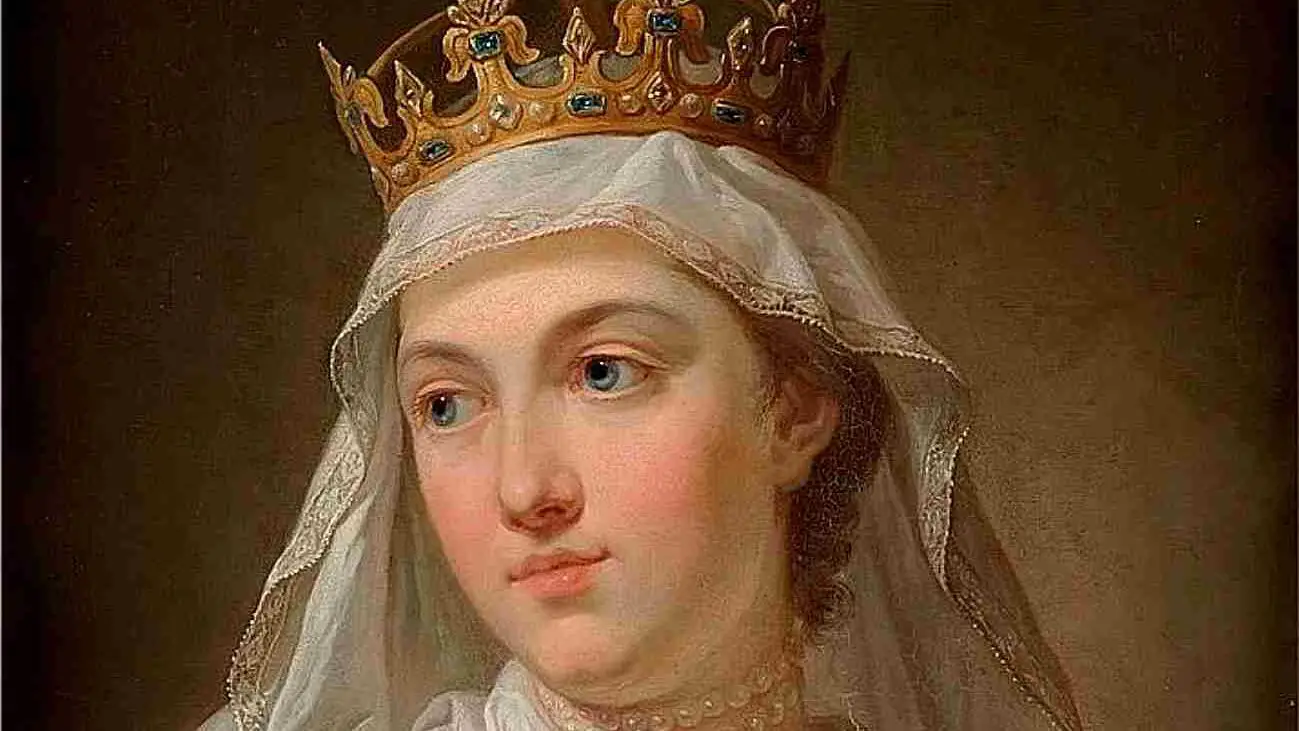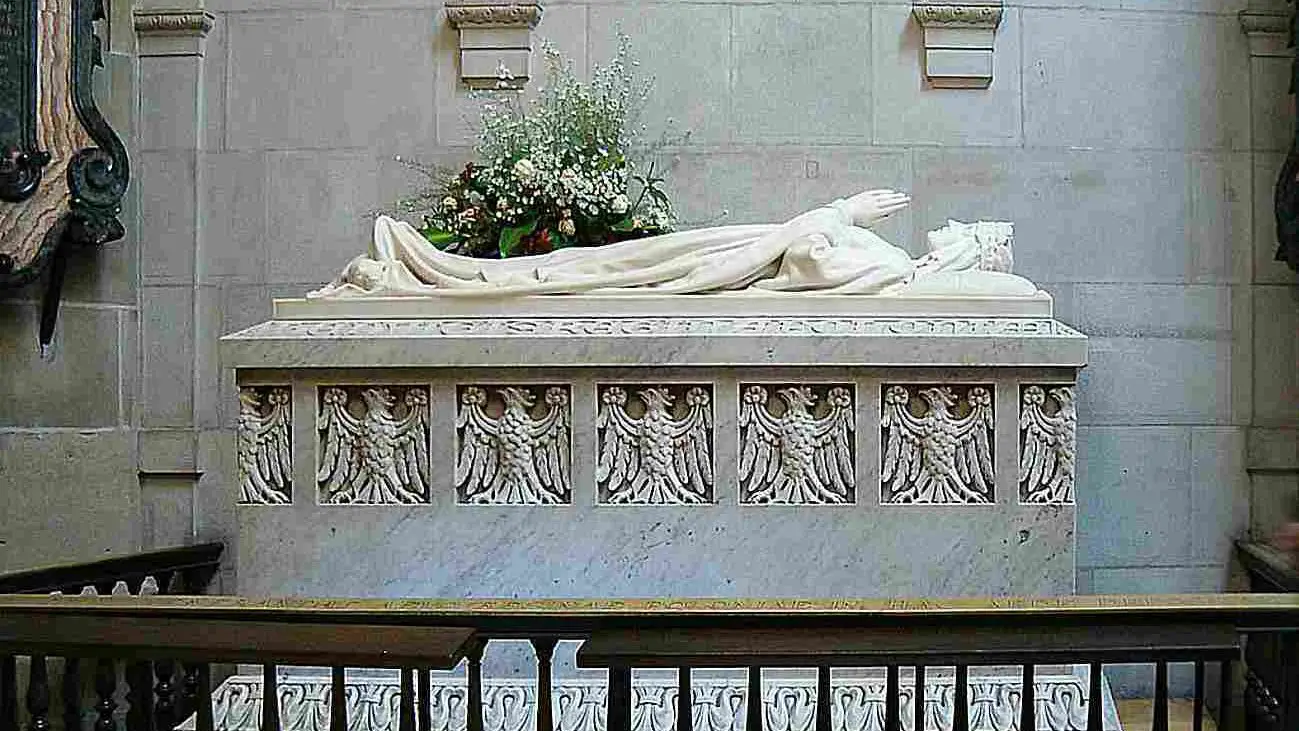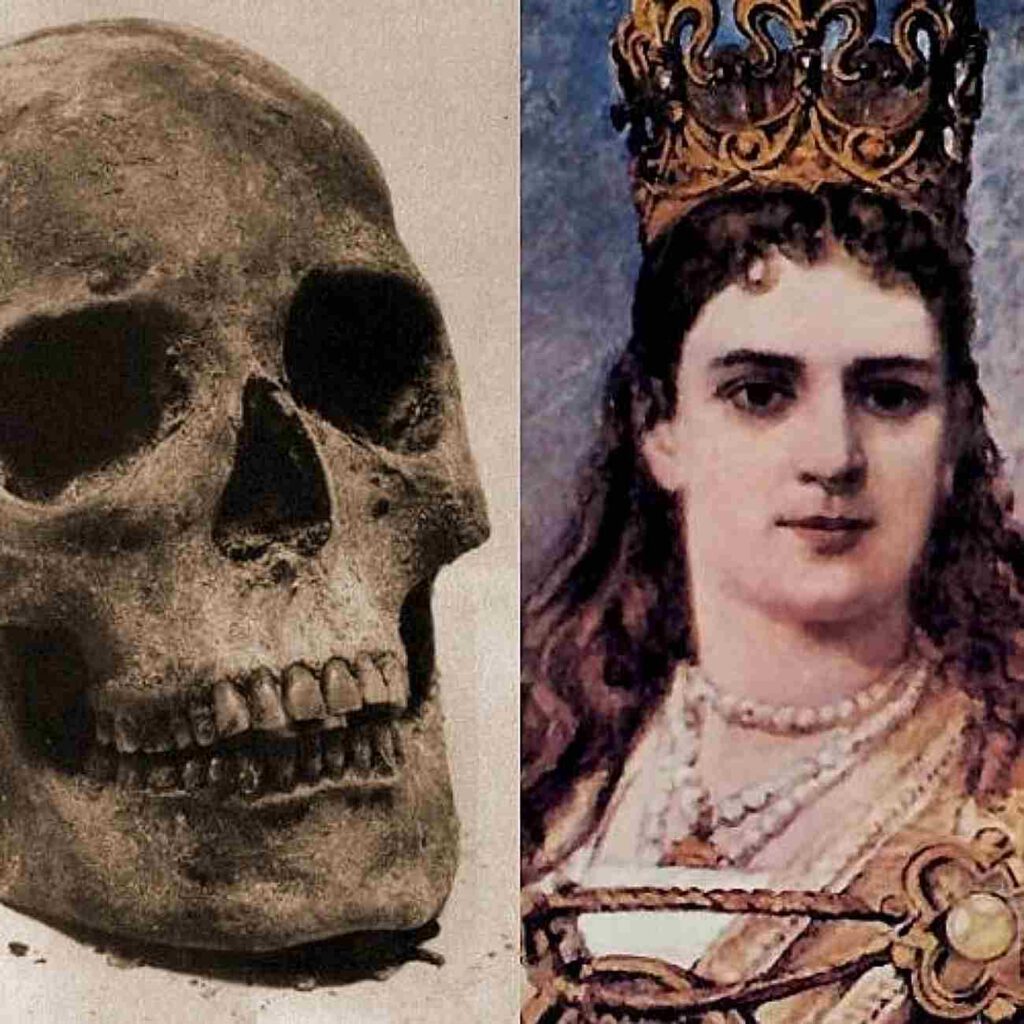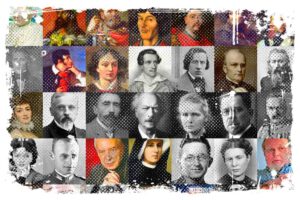Let me present you the story of Elizabeth Bonifacia, daughter of Queen Jadwiga Andegaweńska, which is a fascinating one. One of the most controversial questions surrounding her short life is whether the courtiers hid the truth about her death from the queen.

This story, along with other sensitive details from the queen’s life, was recorded by Jan Długosz. But can we trust the chronicler? Were the people at the court really lying to the queen when she asked about her daughter’s fate?
Joy and Sorrow at the Polish Court
The news of Queen Jadwiga Andegaweńska’s pregnancy brought immense joy to the Polish court. However, I believe it’s worth mentioning that the delivery was far from easy, and the queen fell seriously ill – probably with puerperal fever. From the very beginning, the condition of the infant raised concerns. Elizabeth Bonifacia, the daughter of Jadwiga and Władysław Jagiełło, was born on June 22, 1399. She was extremely frail and weak.

Jan Długosz, the chronicler who wrote about these events in the middle of the next century, reported:
↳ PRO TIP: Do you like traveling? Then before you buy any ticket or book an attraction, check if it's available in this worldwide Viator Database. You may save a lot of money and time. No need to thank me :)
The newborn girl died within three days. Her death was reported [to Jadwiga] at the moment when the queen gave up her spirit, because the women who nursed her tried to hide it from her so that the pain would not increase her illness.
I can tell that most authors accept this message uncritically. And they repeat the story that Jadwiga found out about her daughter’s death only when she herself was dying. However, Długosz’s account, like many others in his chronicle, raises serious objections. But let’s start from the beginning.
Elizabeth Bonifacia – A Brief Life
If you want to understand the story of Elizabeth Bonifacia, you need to know that she was born into a difficult situation. Being there, at the time of her birth, you would have seen a fragile and weak baby girl. The queen’s illness and the complexity of the delivery must have caused great worry at the court. It’s important to remember that in those days, infant mortality rates were high, and many babies didn’t survive.
I think it’s essential to note that we can’t be sure of the accuracy of Jan Długosz’s account. Considering the time gap between the events and his writing, it’s possible that some details were lost or altered. With that in mind, the question remains: Did the courtiers really hide the truth about Elizabeth Bonifacia’s death from Queen Jadwiga?
The Anticipation of a Royal Birth
I am convinced that after more than 12 years of Jadwiga and Jagiełło’s childless marriage, the news of the queen’s pregnancy brought great excitement. To celebrate the expected birth of the royal couple’s child, the future father’s cousin Witold, on behalf of himself and his wife Anna, sent lavish gifts to the Krakow court.
Among them was a silver cradle. The city of Krakow also presented the queen with a gift of 200 Polish Marks and a gold chain worth 25 Polish Marks. In addition, there were 4 fines for the future child’s godmothers and 4 fines for the messenger who would deliver the news of the birth to the city council.
A Princess Arrives
An astrologer had drawn up the first horoscope for the future heir of Jadwiga and Jagiełło, and it predicted that the child conceived in mid-September 1398 would be male. However, on June 22, 1399, a girl was born instead. The princess arrived late in the evening (at 22:35 local time).
The widespread belief that the princess was born prematurely can be traced back to the text of the second epitaph on the queen’s death. This epitaph suggests that the princess was born before her due time: Tempus errat nondum maturae prolis ab alvo, / Cum venit matris regia nata suae.
However, the horoscope of the royal child’s conception indicates that the birth was more likely delayed.
Despite the unexpected gender of the baby and the confusion surrounding her birth, the arrival of Elizabeth Bonifacia brought hope and happiness to the Polish court. But, as we’ve seen earlier, her life was tragically short.
The Royal Baptism
Jadwiga and Jagiełło’s daughter was named Elżbieta Bonifacja. Her first name, Elżbieta, was inherited from her maternal grandmother, Elżbieta Bosniaczka.
The second name, Bonifacja, was given in honor of Pope Boniface IX, who agreed to be the child’s godfather in a letter dated May 5, 1399. The Pope appointed Wojciech Jastrzębiec as his deputy and expressed his wish that the child be named Boniface or Bonifacja.
The baptism of the Polish princess, as well as the Lithuanian princess, was to be performed by Piotr Wysz. This important event further solidified the hope and joy surrounding the young princess’s arrival. However, as we know, the happiness brought by Elżbieta Bonifacja’s birth would soon be overshadowed by her tragic and short life.
The Tragic Death of Elizabeth Bonifacia
Elizabeth Bonifacia was born on June 22 and passed away on the day of St. Margaret of Antioch. In medieval diocesan calendars, St. Margaret’s day was most often written as July 20, less often on July 13, and occasionally on July 15. However, the latest date is ruled out by the record stating that Elizabeth Bonifacia’s death took place before Jadwiga’s death, which happened on the day of St. Alexius the Confessor, i.e., July 17, 1399.
Jan Długosz’s account mistakenly reported that the princess died not after three weeks but after three days. This erroneous information was also repeated by other writers. In reality, Elizabeth Bonifacia died at just three weeks old, on July 13, 1399.
Did Queen Jadwiga Know About Her Daughter’s Death?
If any deception took place in the first three weeks after Elizabeth Bonifacia’s birth, it might have been of a different nature. Perhaps the courtiers tried to hide from Jadwiga the severity of her daughter’s condition. If so, their lies proved to be completely ineffective.
I believe Jadwiga must have been fully aware of the situation. She knew she was dying, and she also knew that her daughter had almost no chance of survival. The queen’s final actions support this.
The Mystery of Their Deaths
The exact cause of death for both the princess and her mother remains unknown due to the lack of detailed information about the course of childbirth, the health of the newborn, and the health problems experienced by the mother during childbirth.
Both Jadwiga and Elizabeth Bonifacia lived for several weeks after giving birth and died only a few days apart. This could suggest that their deaths were related (e.g., infectious disease, inflammation, etc.) but were not caused by complications during childbirth itself (e.g., injuries sustained during childbirth).
It is worth noting that the mortality rate of European newborns and their mothers during a first birth was quite high, even in royal circles with access to the best physicians.
Exploring the Tombstone
The bodies of Jadwiga and her daughter Elżbieta Bonifacja were placed under the floor of the the Cathedral Church in Krakow in a stone tomb. The burial chamber was located on the north side of the presbytery, near the altar of St. Gervasius, and next to the great altar of the cathedral.

It is impossible to determine the form of commemoration, as well as the circumstances and time of destruction of the original tombstone. Perhaps, anticipating the imminent canonization of Jadwiga of Anjou, the construction of a more magnificent tomb for the mother and daughter was postponed. During the reconstruction of the surroundings of the great altar of the cathedral, commissioned by Bishop Gembicki in the mid-17th century, the tombstone was definitely transformed.
Investigating the Tomb
The protocol of opening Jadwiga Andegaweńska’s grave on July 12, 1949, shows that scientists noticed the characteristic arrangement of the queen’s skeleton, similar to one of the sides of the coffin. This can be explained by the fact that Elżbieta Bonifacja was lying next to her mother.

However, nothing remained of the child’s soft cartilages 550 years after the burial. This exploration of the tomb provided a glimpse into the final resting place of the queen and her daughter, but it also left many questions unanswered about their lives and deaths.
References:
- https://pl.wikipedia.org/wiki/El%C5%BCbieta_Bonifacja
- https://pl.wikipedia.org/wiki/Roczniki_czyli_kroniki_s%C5%82awnego_Kr%C3%B3lestwa_Polskiego



